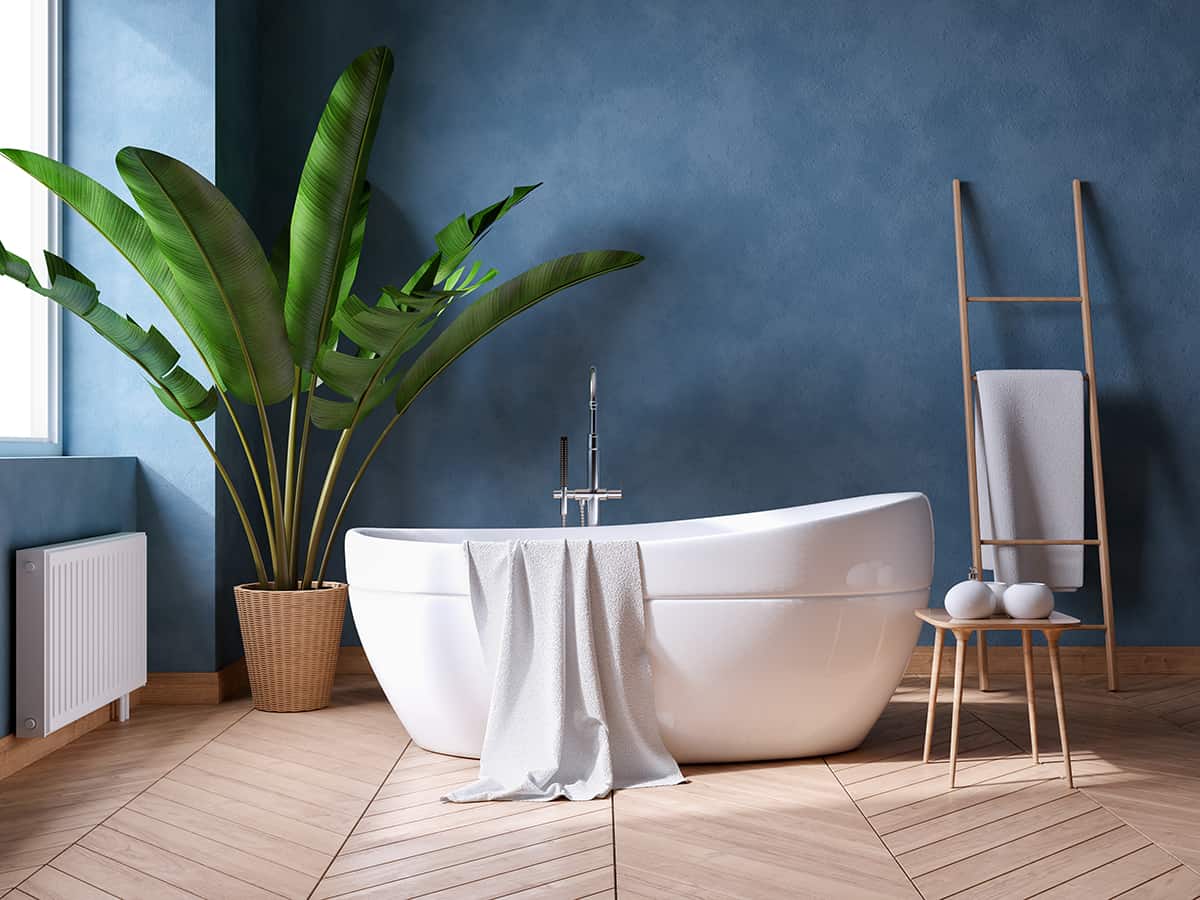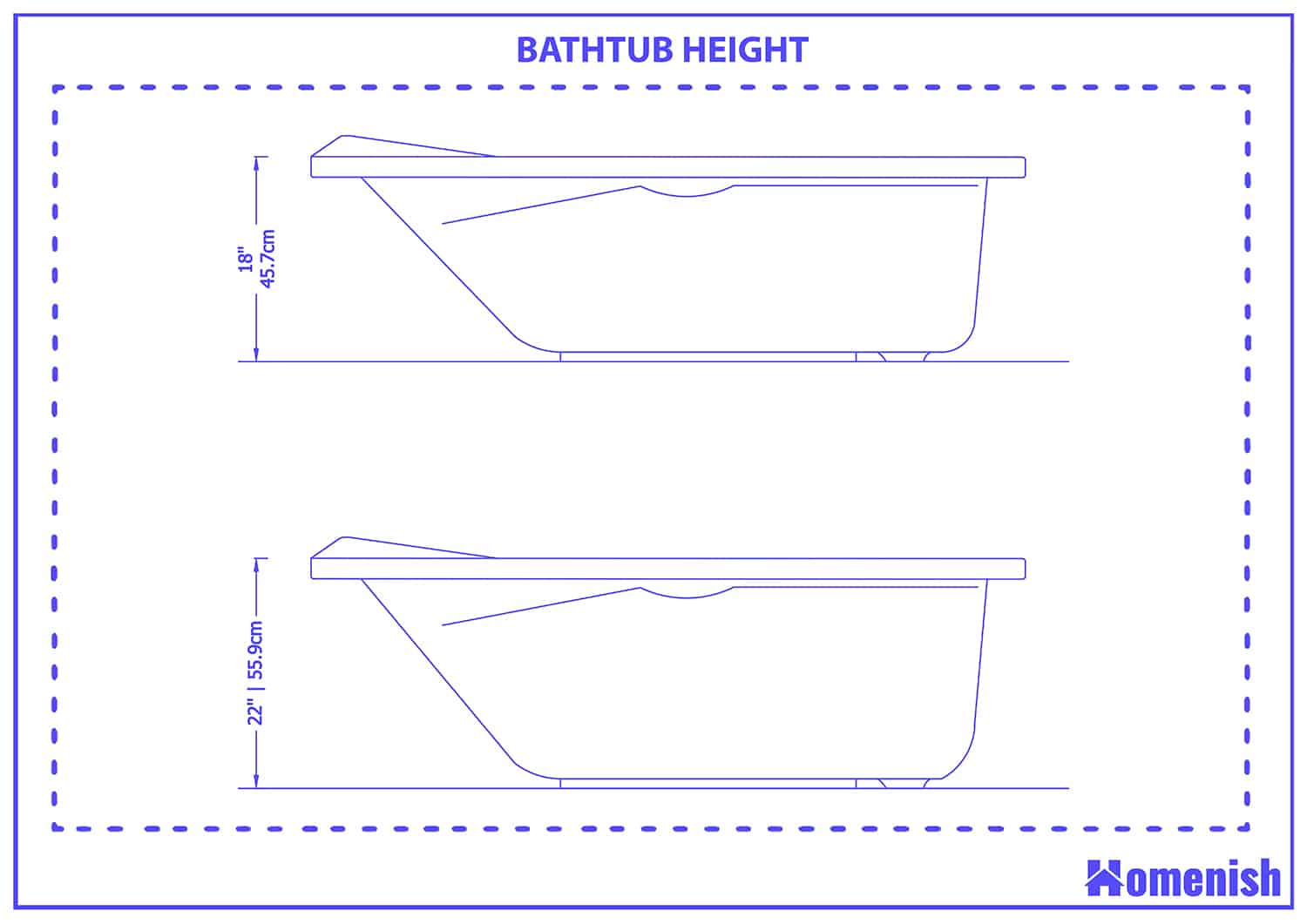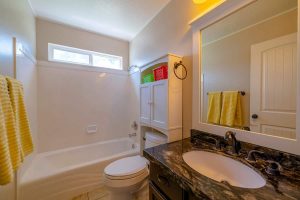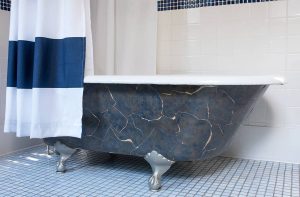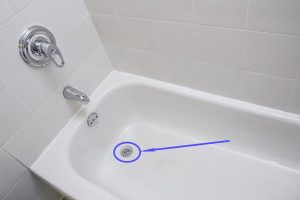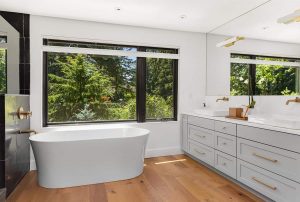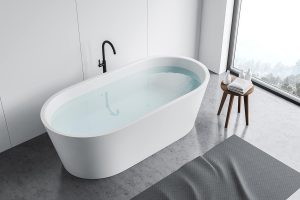Bathrooms are typically the smallest room in the home, and yet we have to fit quite a lot of elements into these compact spaces.
Bathtubs come in a range of shapes and sizes, and having an understanding of these is vital when planning out a bathroom layout to make the most of your space and ensure it works for you and your family.
This article investigates the different types of bathtubs and their typical dimensions, along with the best way to use each type of tub.
Types of Bathtubs and Sizes
Bathtubs come in a range of sizes, so you can find one that will perfectly fit your space for a custom feel. When planning the layout of the bathroom, knowledge of the bathtub dimensions as well as the space required around a bathtub, is essential. The recommended vacant space left in front of a bathtub is 24 inches at a minimum.
This provides adequate room for a person to get in and out of the bath without bumping into other fixtures. When a vanity unit or sink is fitted alongside a bathtub, it should be at least 12 inches away from the edge of the tub.
Besides the bathtub sizes, you should understand the standard bathtub drain size, which is typically around one and a half inches in diameter for a smooth bathtub and plumbing setup.
Alcove Bathtub
Standard alcove bathtub dimensions: 60 inches x 32 inches x 18 inches
An alcove bathtub is exactly that: a bathtub that is designed to fit into an alcove. These work best in bathrooms that have rectangular dimensions, and the bathtub will be slotted along the shortest wall in the room, with the longer walls at the head and foot of the bathtub. This makes the best use of space in long narrow bathrooms, with the bathtub bordered on three sides by the walls. Therefore the walls of the room are creating the alcove.
Alcove bathtubs tend to range in size from 5 feet to 6 feet in length, so they are ideal for bathrooms that have one wall measuring 5 or 6 feet. If the bathroom does not have a wall that is 5 or 6 feet long, then the alcove bathtub will not be the best solution. There are some alcove bathtubs available in an extra short size of 54 inches or 4.5 feet for extra small bathrooms, but the selection available of these will be significantly less.
There are also extra-long bathtubs available in alcove designs, which measure 72 inches or 6 feet in length, which are useful in bathroom remodels where walls have been removed and the space has been extended.
Drop-in Bathtub
Standard drop-in bathtub dimensions: 45 to 72 inches x 30 to 32 inches x 14 to 20 inches
Drop-in bathtubs are designed to be dropped into a pre-existing or pre-built structure, usually a deck. The deck can be freestanding or built into an alcove, but it will need to be clad on all visible, exposed sides by another material since the bathtub itself has no factory edges.
The deck should have at least 6 inches of surface space around the edge of the bathtub, so this will need to be accounted for when taking measurements. For example, if a drop-in bathtub measures 6 feet in length, then the deck will need to measure at least 7 feet in length to account for 6 inches of surface space at either end.
Oval Bathtub
Standard oval bathtub dimensions: 60 inches x 41 inches x 24 inches
Oval bathtubs can be freestanding or drop-in. These tubs create the impression of luxury because they are seemingly more spacious, but actually, they are usually only wider than standard tubs while having similar length measurements.
In small bathrooms, oval bathtubs don’t usually make the best use of space, but they can be a nice choice in bathrooms with larger-than-usual proportions.
Whirlpool Bathtub
Standard whirlpool bathtub dimensions: 60 inches x 32 inches to 36 inches x 18 inches to 23-1/4 inches
Whirlpool tubs come in both drop-in and alcove models, where the workings of the jets can be fitted beneath the shell of the tub. These tubs come in standard sizes, so they work well for average-sized bathrooms.
Corner Bathtub
Standard corner bathtub dimensions: 60 inches x 60 inches x 22 inches
Corner bathtubs are best suited for large bathrooms because they are generously proportioned and will take up a decent amount of space. They are considered more of a lifestyle component in a bathroom rather than being built for functionality and are a nice choice if you like to relax in a spacious tub and enjoy reading a book or watching TV. These tubs can be molded into almost triangular shapes to fit into the corner of a room, or you could use a drop-in tub slotted into a corner-built deck to create a more custom corner bathtub.
Freestanding Bathtub
Standard freestanding bathtub dimensions: 55 to 72 inches x 27 to 32 inches x 15 to 20 inches
You might expect that a freestanding bathtub takes up less space than a drop-in or alcove bathtub because you don’t have to take into account additional walls around the tub. In actual fact, this is rarely the case because freestanding bathtubs should be placed some distance away from the nearest walls, and therefore, they can take up a bigger footprint than alternative options.
The minimum distance you should leave between a freestanding tub and the nearest wall is 4 inches, so take this into account when planning the layout of a bathroom.
Bathtub Height
When planning the layout of a bathroom, it’s common to take into account the length and width of the tub but forget about the height. The height of the tub is going to affect how easy or difficult it is to get in and out of the tub, and it will also affect how deep the water is.
The standard bathtub height is 18 inches, and this will give most people a water depth of around 18 inches. For a deeper bath, choose a soaker tub with a standard depth of 22 inches.
